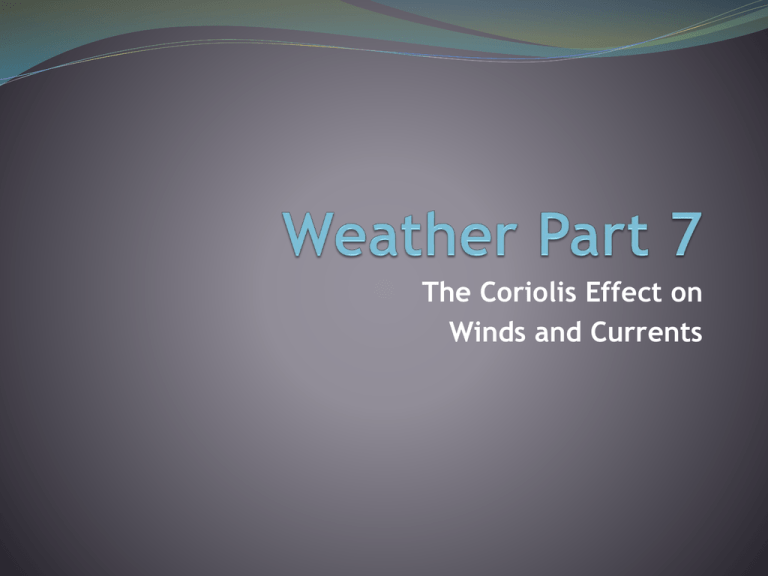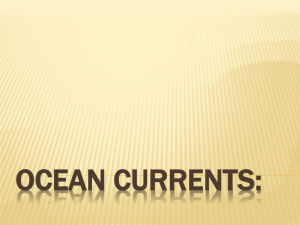25. Weather Part 7 – The Coriolis Effect on Winds and Currents
advertisement

The Coriolis Effect on Winds and Currents Consider This: The Coriolis force has been observed since at least the 1650’s. Italian military officers wrote that in artillery practice the cannon balls always landed to the right of where they aimed and predicted. Earth’s Rotation The Earth is a sphere and rotates on an axis. Counter-clockwise when looking down from the north pole. The equator must rotate fastest to “keep up”. The Coriolis Effect Causes moving objects to: Turn to the right in the northern hemisphere. Turn to the left in the southern hemisphere. These are from the direction you are looking. The Coriolis Effect from MIT The Coriolis effect has a huge influence on weather patterns! Remember: The shape of the Earth causes different locations to have different temperatures. Warm air rises because it is less dense. Objects in the air are deflected because of the Coriolis Effect. Air Circulation There are three convection currents in each hemisphere. Called cells. Global Winds The air moving north or south because of convection, still moves east or west because of rotation. The cells are deflected because of the Coriolis Effect. Global Atmospheric Circulation Global Winds Wind systems are wide zones of prevailing winds. Trade Winds Prevailing Westerlies Polar Easterlies Occur in both hemispheres. Jet Stream A narrow band of strong, fast-moving winds. In upper-level air. Jet Stream Caused by uneven temperatures and the Coriolis Effect. Jet streams generate large scale weather systems. What is a Jet Stream? Think About It: The atmosphere and the ocean act as one system called the air-sea interface. How do the winds impact the ocean? How does Earth’s rotation impact the ocean? Ocean Currents Ocean currents travel in the direction of the wind and are impacted by the Coriolis Effect. Gyres: Circular ocean currents. Ocean Currents Warm currents from the equator towards the poles. Cold currents from the poles towards the equator. Left side is always warm. Right side is always cold. Think About It: Circulating air has a big impact on our weather. Ocean currents also have a big impact on our weather. Both impacted by the Coriolis Effect.










